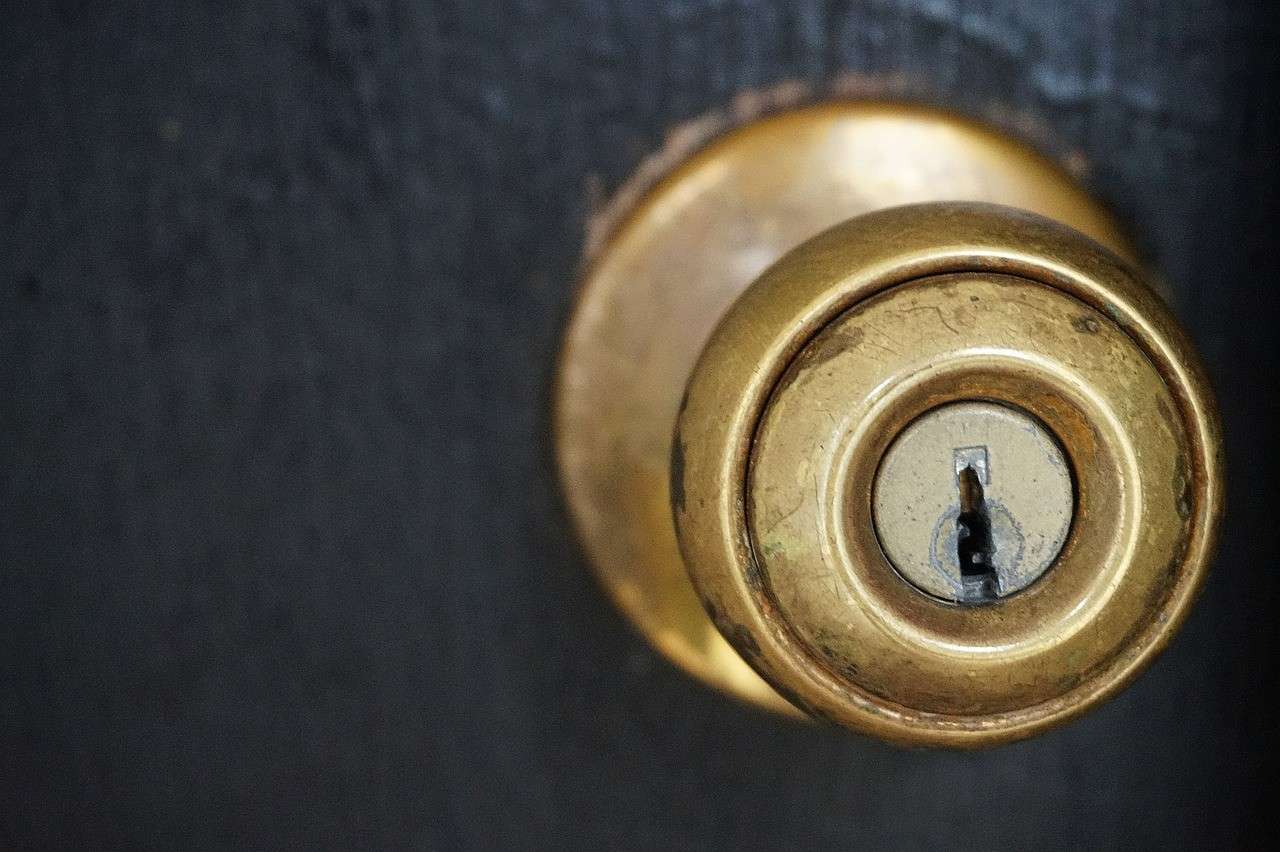A wobbly door handle might seem like a small annoyance, but trust me, if left unchecked, it can get worse and even leave you with a completely useless handle. I’ve dealt with my fair share of loose handles, and over time, I’ve learned a few effective fixes that can save you from frustration. Whether your door handle is spinning, pulling away, or just feeling unstable, here are five tried-and-tested solutions to tighten things up.

1. Tighten the Screws
The first thing I always check when a door handle starts wobbling is the screws. Many handles have exposed or hidden screws that loosen over time due to frequent use.
Materials Needed:
- Screwdriver (Phillips or flathead, depending on the screws)
- Allen wrench (for hidden set screws, if applicable)
How to Fix It:
- Use a screwdriver to check for loose screws around the base of the handle.
- If the screws are exposed, simply tighten them with a screwdriver.
- If the screws are hidden, look for a small hole or slot where you can insert an Allen wrench to tighten the set screw.
This simple step has resolved most of my wobbly handle issues.
2. Replace Stripped Screws
Sometimes, no matter how much you tighten the screws, the handle remains loose. This could be due to stripped screws or worn-out screw holes.
Materials Needed:
- New screws (matching size and type)
- Wooden toothpicks or matchsticks
- Wood glue
- Utility knife (to trim excess wood)
How to Fix It:
- Remove the screws and inspect them for wear. If they look damaged, replace them with new ones of the same size.
- If the hole itself is stripped, insert wooden toothpicks or matchsticks coated in wood glue, let it dry, and then reinsert the screw for a firmer grip.
I’ve used this method multiple times, especially on older doors, and it works like a charm!
3. Adjust or Replace the Spindle
The spindle is the metal rod connecting both sides of the door handle through the latch mechanism. If the handle spins loosely, the spindle might be worn out or misaligned.
Materials Needed:
- Replacement spindle (if needed)
- Measuring tape (to ensure correct spindle size)
- Screwdriver
How to Fix It:
- Remove the handle and inspect the spindle for wear.
- If it’s slightly short or worn down, try pulling it out slightly before reattaching the handle.
- If the spindle is damaged, replace it with a new one of the same length and thickness.
I had a spindle that was slightly too short for my handle, and extending it just a little bit made all the difference.
4. Secure the Backplate
Many door handles have a backplate that sits flush against the door. If the backplate is loose, the entire handle assembly can feel wobbly.
Materials Needed:
- Screwdriver
- Wood filler (if holes are worn)
- Drill (if new holes are needed)
- New screws (if required)
How to Fix It:
- Remove the handle and check the backplate screws.
- Tighten them securely, making sure the plate sits flush against the door surface.
- If the holes are worn, use wood filler and re-drill new holes for a secure fit.
This fix helped me on a few older wooden doors where the screw holes had become slightly enlarged.
5. Lubricate and Maintain Moving Parts
Sometimes, a door handle feels loose because of internal wear or friction inside the mechanism. Regular lubrication can prevent further deterioration.
Materials Needed:
- Graphite or silicone-based lubricant
- Clean cloth
How to Fix It:
- Remove the handle and apply a small amount of graphite or silicone-based lubricant to the moving parts.
- Reassemble the handle and test for smooth operation.
After applying lubricant to an old, stiff door handle in my house, it not only stopped wobbling but also felt much easier to use.

8 Tips for Maintaining Door Handles
To prevent door handles from becoming loose or wobbly in the future, follow these simple maintenance tips:
- Check Screws Regularly – Periodically inspect and tighten screws to prevent them from loosening over time.
- Lubricate Moving Parts – Apply a small amount of graphite or silicone-based lubricant every few months to keep the mechanism running smoothly.
- Avoid Excessive Force – Don’t yank or pull on the handle too hard, as this can cause screws to loosen or damage the spindle.
- Clean Handles Properly – Use a mild cleaner to remove dirt and grime, especially for handles made of brass or stainless steel.
- Check for Wear and Tear – Inspect the handle, spindle, and screws for signs of damage and replace parts as needed.
- Use Thread Locker on Screws – If screws keep loosening, apply a small amount of thread-locking adhesive to keep them secure.
- Ensure Proper Installation – If you’re installing a new handle, follow the manufacturer’s instructions to avoid misalignment.
- Adjust Door Alignment – If the door is misaligned, it can put extra strain on the handle, causing it to loosen prematurely.
Fixing a wobbly door handle doesn’t require a professional—just a few simple tools and a bit of DIY spirit. From tightening screws to replacing worn-out spindles, these methods have personally saved me from the hassle of broken handles. So, the next time your door handle starts acting up, try these fixes before considering a costly replacement. Trust me, it’s easier than you think!
Have you dealt with a loose door handle before? Share your experiences and fixes in the comments!

Frequently Asked Questions (FAQs)
- What causes a door handle to become wobbly over time?
A door handle can loosen due to regular use, causing screws to loosen, spindles to wear out, or backplates to shift, leading to a wobbly feel. - How can I fix a wobbly door handle?
You can address a wobbly door handle by tightening the screws, replacing stripped screws, adjusting or replacing the spindle, securing the backplate, or replacing the handle if necessary. - What tools are needed to fix a loose door handle?
Common tools include a screwdriver, Allen wrench, and possibly replacement screws or a new spindle, depending on the specific issue. - How do I access screws on a handle with no visible screws?
For handles without visible screws, you may need to remove the cover plate or rosette to access hidden screws. This often involves prying off the cover gently with a flathead screwdriver. - Can I use threadlocker to prevent screws from loosening again?
Yes, applying a threadlocker adhesive to the screws can help prevent them from loosening over time due to regular use. - What should I do if the spindle is worn out?
If the spindle is worn, replacing it with a new one of the same size and shape is recommended to restore proper function to the door handle. - Is it better to repair or replace a wobbly door handle?
If the handle is structurally sound, repairing it by tightening screws or replacing worn parts is often sufficient. However, if the handle is damaged or continues to loosen, replacement may be the better option. - How can I prevent my door handle from becoming loose in the future?
Regular maintenance, such as periodically checking and tightening screws, and ensuring the handle is used gently, can help prevent it from becoming loose. - Are there specific types of door handles that are more prone to becoming wobbly?
Handles with hidden screws or those made from lower-quality materials may be more susceptible to loosening over time. - Can a wobbly door handle affect the door’s locking mechanism?
Yes, a loose handle can misalign the latch or lock mechanism, potentially causing issues with the door’s ability to lock or latch properly.





